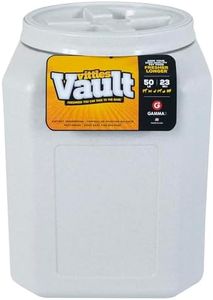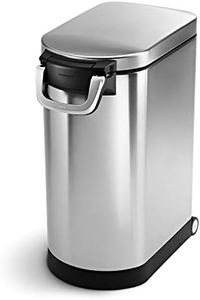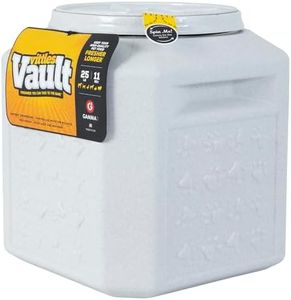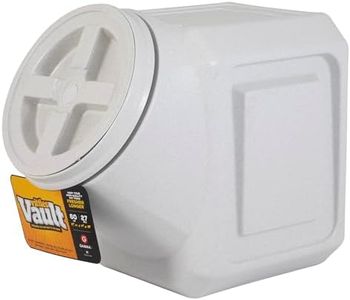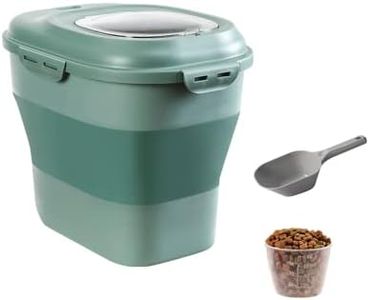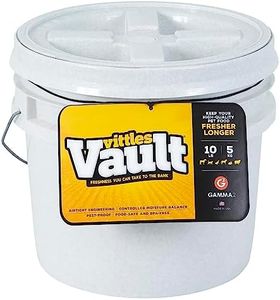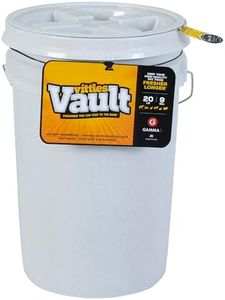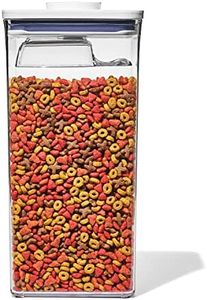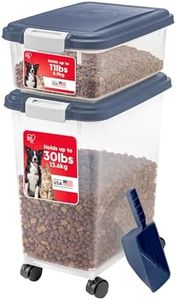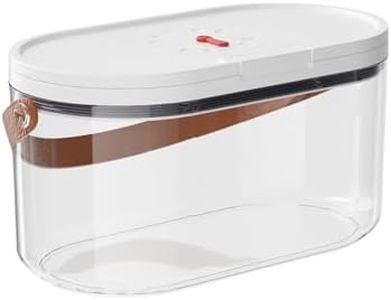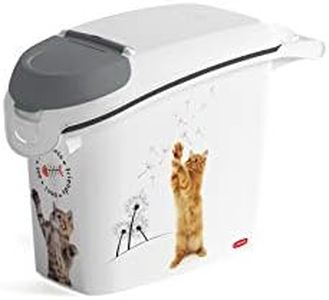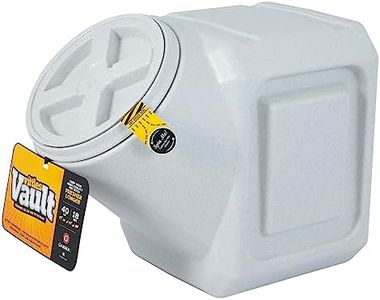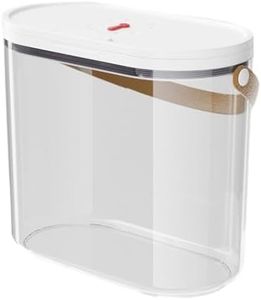We Use CookiesWe use cookies to enhance the security, performance,
functionality and for analytical and promotional activities. By continuing to browse this site you
are agreeing to our privacy policy
10 Best Dog Food Containers
From leading brands and best sellers available on the web.Buying Guide for the Best Dog Food Containers
Choosing the right dog food container can make a big difference in keeping your dog’s food fresh, safe from pests, and easy to access. The best container for you depends on how much food you typically store, where you plan to keep the container, and how often you need to access the food. By understanding the key features of dog food containers, you can find one that fits both your needs and your dog's.CapacityCapacity refers to how much dog food a container can hold, usually measured in liters, quarts, pounds, or kilograms. This is important because you’ll want a container that can store a full bag of food without being too bulky for your storage space. Small containers (under 10 pounds) are best for people with small dogs or those who buy food in small amounts, while medium containers (10-25 pounds) suit most average dog owners. Large containers (over 25 pounds) are ideal for those with multiple dogs, large breeds, or who buy food in bulk. Choose a size that matches both your buying habits and your available space.
MaterialDog food containers are usually made of plastic, metal, or glass. This affects durability, how well the food is protected, and how easy the container is to clean. Plastic containers are lightweight and budget-friendly but should be made from food-grade, BPA-free plastic to ensure safety. Metal containers, like stainless steel, are sturdy, resist pests well, and usually last longest, but can be heavier. Glass containers are best for small amounts of food and offer a chemical-free storage but can break easily and are heavy. Pick the material based on where the container will sit, whether you need something easy to move, and your preference for durability and food safety.
Seal/AirtightnessAirtightness is about how well the container keeps air, moisture, and pests out. A good seal helps keep food fresher for longer and prevents odor leaks. Containers with airtight lids often use rubber gaskets or locking mechanisms. Basic snap-lids may be fine for short-term storage, but for longer storage or in humid areas, an airtight seal is very beneficial. If your dog eats its food quickly, this might be less important, but for long-term storage or pest-prone areas, an airtight container is a must-have.
Ease of Access and DispensingThis refers to how easy it is to open, close, and scoop food out of the container. Some containers have wide mouths for scooping, flip-top lids for quick pouring, or even built-in scoops. If you’re feeding a large dog and handle big containers, look for easy-open lids and handles for lifting. If you have limited space or need one-handed operation, convenient openings or pour spouts will be more important.
Stackability and ShapeStackability speaks to how easily you can store one container on top of another, while shape (square, rectangular, or round) affects where the container can fit. Stackable, rectangular containers help make the best use of pantry or closet space, especially for people storing multiple types of food or for multi-pet households. Round containers might be easier to pour from but tend to waste space. Pick the shape and stackability based on where you want to store the container and how much space you have.
Ease of CleaningEase of cleaning means how simple it is to wash and dry the container. Removable lids and wide openings help, as do dishwasher-safe materials. Regular cleaning is important for hygiene and to prevent oils from the food from building up. If you want minimal maintenance, look for containers that are easy to take apart and have smooth surfaces.
